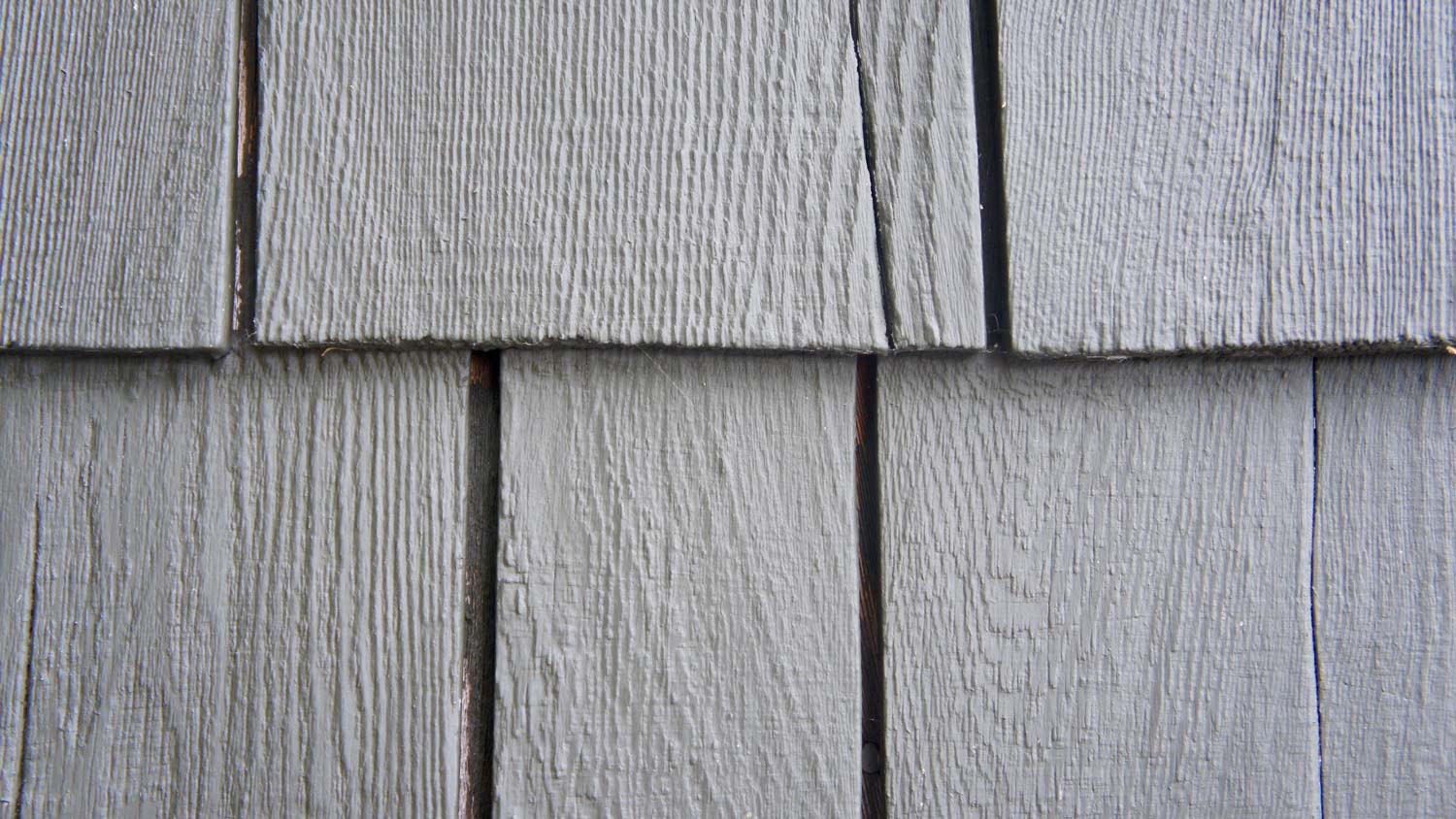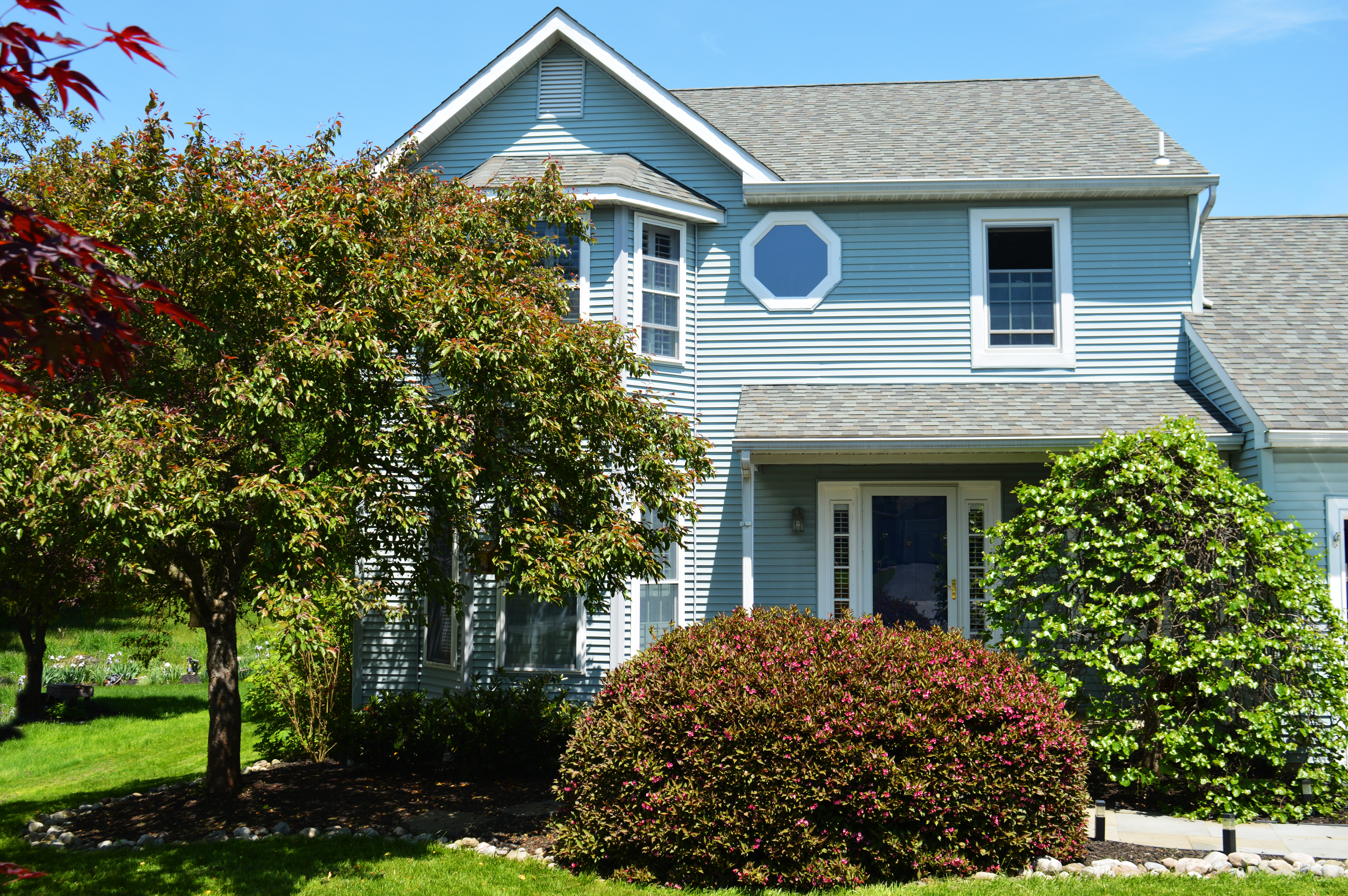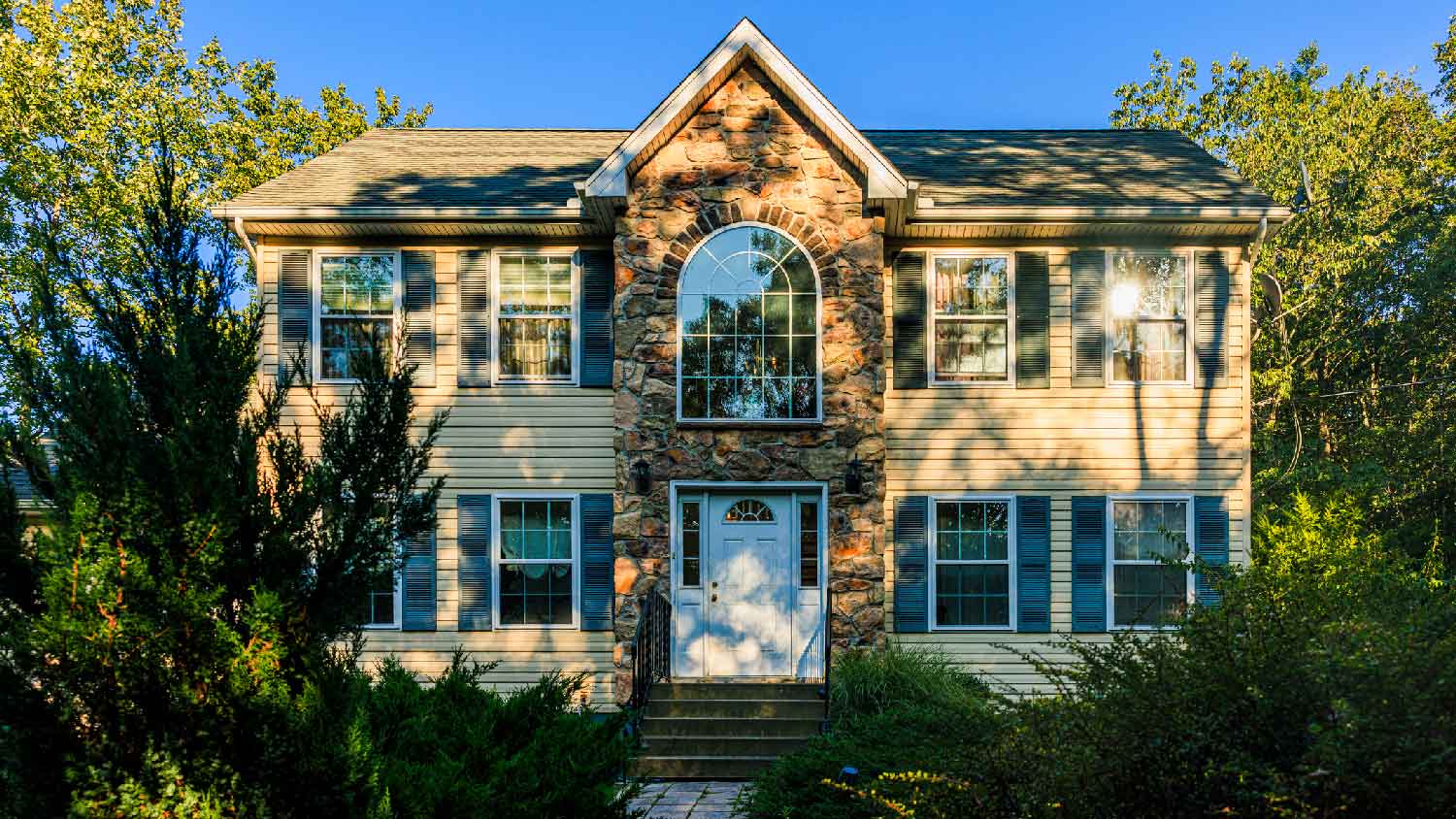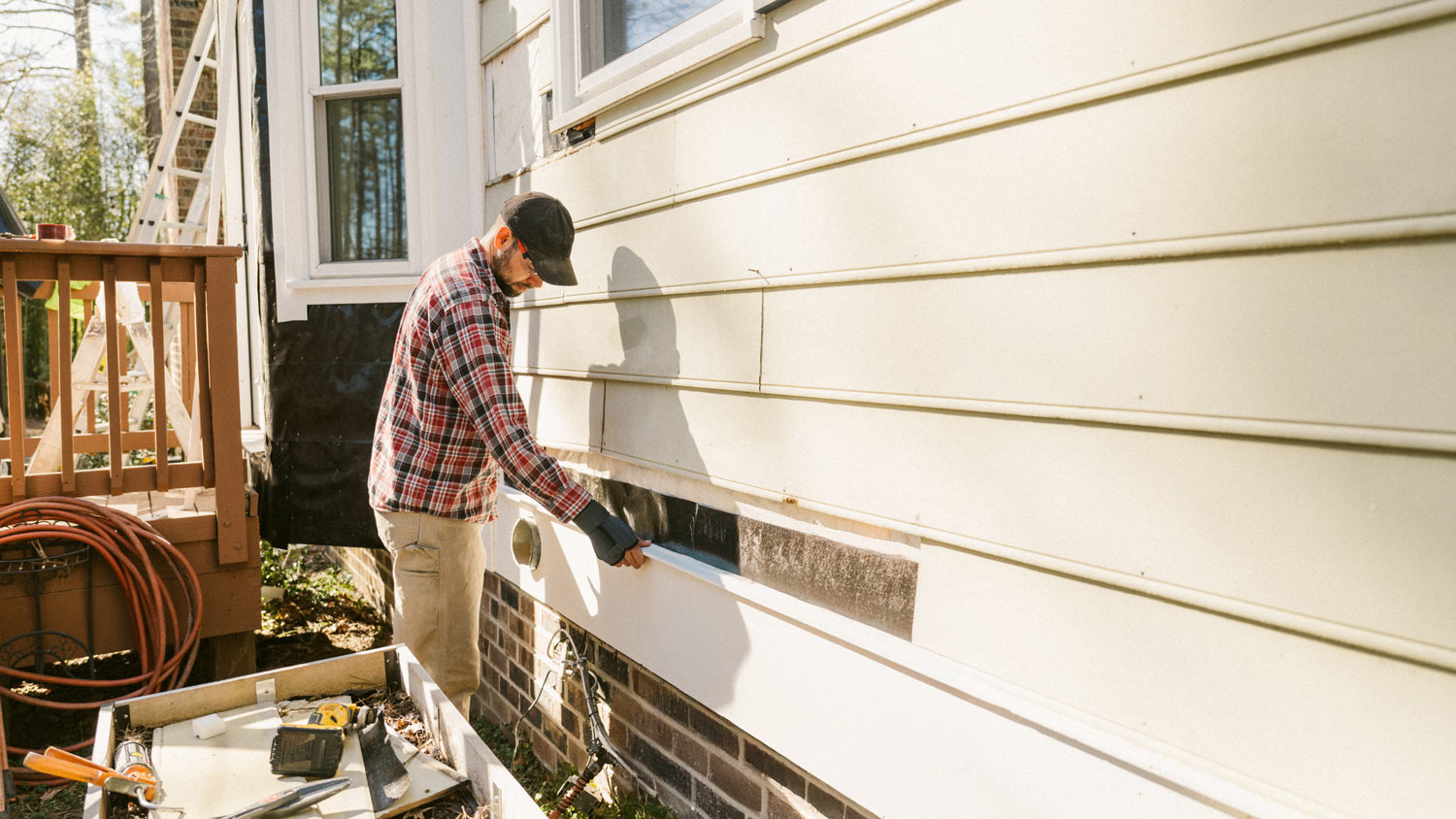
Considering a home exterior makeover with cladding? Find out the average house cladding cost to help you plan your budget.
The popular siding brand offers clear instructions on this tricky question


We do not recommend caulking Hardie board siding in most cases, but it depends on the placement and project.
The manufacturer’s instructions may indicate adding a permanently flexible sealant in some areas.
Adding too much caulk to Hardie Board can lead to water damage or lack of flexibility.
Debating whether to use caulk or not on Hardie Board siding can send you down a bit of a rabbit hole. The short answer to the caulk debate is: it depends. Hardie Board—the popular brand of fiber cement siding—comes with detailed instructions for installation. While flexible sealant is more common, using caulk highly depends on its placement, so there is no one-size-fits-all answer.
Caulking will typically depend on the type of joint for your Hardie board siding. The manufacturer’s instructions will specify whether to use caulk, sealant, or neither in that particular spot. Installers typically add flashing behind butted joints and avoid caulking to encourage property water flow. Securing Hardie Boards with caulk often goes against the board's natural design to shed water. Adding caulk can inadvertently trap moisture in your siding and lead to rot.
Some instructions include adding a continuous bead of sealant around the outer edge of an area but specify to leave a full side without it. In other cases, such as around wires and pipes, you'll find instructions on how to caulk Hardie Board around specific areas. For the most part, however, caulk itself is rather rare.
Installers should only use "permanently flexible" caulks or sealants on Hardie board siding.
We also recommend using a caulk:
Categorized as an elastomeric joint sealant OR
Categorized as a latex sealant
That has a longevity of 50 years
That is paintable
Bonds easily without primer
Your instruction packet may also discourage repairing Hardie Board with caulk or patches for areas larger than a dime.

Fiber cement siding took off in the 1980s with the James Hardie company at the helm. The popular siding is a composite of water, fly ash, wood pulp, and Portland cement. Consult a local siding contractor to determine whether this type of siding is a good fit for your home based on home climate, age, and size.
The cost of Hardie board falls in the middle of what's on the siding market, with prices between $5 and $14 per square foot. Keep in mind that DIY Hardie Board installation is not ideal, since it's both heavy and difficult to cut without excessive dust. Installing or repairing Hardie boards yourself could void your warranty in some cases.
Hardie board is highly durable, has a Class A fire rating, and is sustainable to produce. Homeowners also enjoy that the siding is very versatile and can mimic other major siding options without the downside of rot or rust. When comparing Hardie board and vinyl siding, Hardie board lasts between 10 and 20 years longer on average.
The confusion about whether to caulk or not is only one of the tricky problems with fiber cement siding. Installation can be complex, leading to higher prices and time frames. Fiber cement has the tendency to absorb moisture over time, leading to potential mold or damage issues. While Hardie board and fiber cement are comparably energy efficient, you will still need to pair the siding with insulation to ensure a high R-value in areas with extreme temperatures.
Our house was damaged by a tree in a storm. We had a hole going through to our bedroom ceiling, bent gutters, a broken porch window, some siding damage, it was quite the mess. I contacted Star Home thinking they at least could fix the roof and gutters but they did it all. It was awesome to...
The workers doing our siding and deck did a great job. Everyone was friendly, knowledgeable and competent. There were a couple of minor issues with the siding and Safety First was quick to respond and rectify the issues. I did change my mind on a couple of deck issues -- while we are very...
Patio, siding, window, electrical work done. My neighbor also had her patio done. Will hire for electrical work soon.
In Spring of 2015 my wife and I decided to hire Remodeling Dreams Construction to do hail repairs on our home. In the 4 years since, we’ve encountered an endless list of problems with their repairs, costing us tens of thousands of dollars. The roofing, siding, painting, windows, and gutters...
He was very professional and curtious, he worked hard getting the siding to match up after a hail storm. I would recommend him to everyone I know.
The project went great and we could not be happier. The house looks brand new! The guys were able to complete the roof in just over a day and the siding and gutters took about 4 days. We would certainly use them in the future to replace our windows and recommend them to friends and family.
I recently purchased my house and could see an issue with the gutters. There were visible gaps between the gutters and the roof and the house. Due to this, I had birds living in my attic. I knew I needed to get this taken care of before storm season hit. I contacted 3 different contractors on...
Everything was perfect can't ask for a better experience. From the first time I called everything went smooth. He had to make the door way wider since I was adding a side light. He was busy but worked me in between a couple big jobs he was doing. They did the install one day and had to come...
The roofing job went very well. There are some loose boards on the siding. Once the job started, everything was done very quickly.
From average costs to expert advice, get all the answers you need to get your job done.

Considering a home exterior makeover with cladding? Find out the average house cladding cost to help you plan your budget.

Discover the cost to install exterior trim. Learn about price factors, labor, materials, and ways to save on your exterior trim installation project.

Thinking about replacing your siding? Our shou sugi ban siding cost guide will help you determine if this Japanese wood siding is within your budget.

Confused by the differences between cladding vs. siding? You’re not alone. The terms are used interchangeably, but there are some subtle differences.

Siding is a critical part of keeping your home protected from the elements and looking great. Learn what siding on a house is, how long it lasts, and what it costs.

While Dutch lap is a more detailed type of siding, clapboard is often less expensive and more widely used. If you're weighing these options against each other, our guide can help you decide which type makes the most sense for your home’s facade.